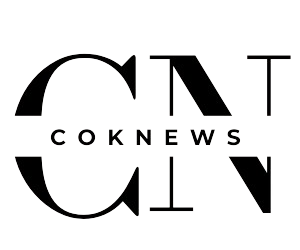In today’s fast-paced world, where sedentary lifestyles are common, staying fit and healthy has become more important than ever. Fitness is not just about looking good; it’s about feeling good, improving mental health, and boosting overall quality of life. A well-balanced workout routine can help achieve these goals by strengthening the body, improving endurance, and reducing the risk of chronic diseases. Whether you are just starting your fitness journey or you’re a seasoned athlete, having a clear plan and understanding the components of fitness is essential for success.
Understanding Fitness Goals
Defining Your Fitness Goals
Setting fitness goals is one of the first steps to achieving long-term results. Without a clear goal in mind, it can be difficult to stay motivated and focused. Goals provide direction, help measure progress, and give you something to strive for. Fitness goals vary from person to person, depending on individual preferences and priorities. Some people aim to build muscle mass, while others focus on losing weight or increasing endurance. Whatever your goals, it’s essential to define them clearly and break them down into smaller, actionable steps.
Short-term vs. Long-term Goals
When setting fitness goals, it’s important to differentiate between short-term and long-term objectives. Short-term goals are milestones that help you stay motivated along the way, such as increasing your bench press by 5 pounds or completing a 5k run in less than 30 minutes. Long-term goals, on the other hand, are broader and more challenging, like building lean muscle or running a marathon. Both types of goals are important and should complement each other in your fitness journey.
Types of Workouts
Different Workouts for Different Fitness Levels
There is no one-size-fits-all approach to fitness. Depending on your current fitness level, age, and physical condition, different types of workouts will be more effective for you. Whether you are a beginner or an advanced athlete, it’s important to choose the right workout that suits your body and goals.
Cardiovascular Workouts
Cardio exercises, like running, swimming, and cycling, are excellent for improving heart health, burning calories, and increasing stamina. They are especially important for anyone looking to lose weight or build endurance. Cardiovascular exercises can be performed in various forms, including steady-state cardio, interval training, or HIIT.
Strength Training
Strength training, which involves lifting weights or using bodyweight exercises, is crucial for building muscle mass, improving bone density, and boosting metabolism. For beginners, it’s recommended to start with lighter weights and gradually increase the load as strength improves.
Flexibility and Mobility Exercises
Incorporating flexibility exercises like yoga or Pilates into your routine is essential for maintaining joint health, improving posture, and preventing injury. Stretching regularly can also help reduce muscle soreness after intense workouts and enhance overall mobility.
High-Intensity Interval Training (HIIT)
HIIT is a highly effective workout method that alternates between short bursts of intense activity and brief rest periods. This type of training boosts metabolism, increases fat burn, and improves cardiovascular endurance. HIIT workouts can be tailored to any fitness level, making them a great choice for anyone looking to maximize workout efficiency in a short amount of time.
The Role of Nutrition in Fitness
Balancing Macros: Carbs, Protein, and Fats
Nutrition plays a critical role in supporting your fitness efforts. A balanced diet that includes adequate amounts of protein, carbohydrates, and healthy fats can help fuel your body before and after workouts, promote muscle recovery, and boost overall performance.
Supplements for Enhanced Results
While whole foods should be your primary source of nutrition, supplements can play an important role in enhancing fitness results. Common supplements such as protein powders, creatine, and BCAAs can support muscle repair, improve endurance, and enhance strength. However, supplements should be used in moderation and in conjunction with a balanced diet.
Hydration and Its Impact on Performance
Staying hydrated is one of the most important factors in fitness. Dehydration can negatively affect your strength, endurance, and recovery. Drinking water before, during, and after exercise helps regulate body temperature, support muscle function, and prevent cramping.
Recovery Strategies
The Importance of Sleep and Rest Days
Recovery is an essential part of any fitness plan. Without adequate rest, the body cannot repair muscles or build strength. Sleep plays a crucial role in recovery by allowing the body to recover and restore energy levels. Scheduling rest days into your workout routine will also help prevent overtraining and reduce the risk of injury.
Active Recovery Techniques
Active recovery includes activities like light stretching, foam rolling, or walking, which can help increase blood flow to muscles, reduce soreness, and speed up recovery time. Incorporating these techniques into your routine can help maintain muscle flexibility and prevent stiffness after workouts.
The Science of Muscle Repair
When you exercise, tiny muscle fibers tear, and they need time to repair. This process is how muscles grow stronger. During recovery, your body rebuilds these fibers and increases muscle mass. This is why recovery days and rest are so important for making progress in strength and endurance.
Tracking Your Progress
Using Wearables and Apps
Tracking your progress can help you stay motivated and see how much you’ve improved over time. Fitness apps and wearables like smartwatches can track everything from steps and heart rate to sleep patterns and calories burned, making it easier to monitor your fitness journey.
Setting Milestones for Success
Breaking down larger fitness goals into smaller, achievable milestones can make the process less overwhelming. For example, instead of focusing on losing 20 pounds, aim to lose 1-2 pounds per week. Celebrate each small victory, and stay consistent.




